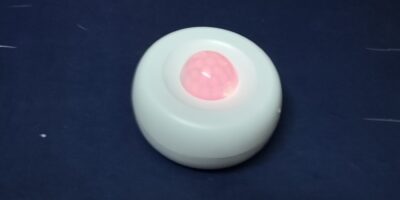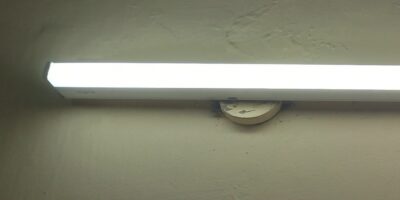
We’ve covered how to convert a house into a smart home before, but how about buying a pre-built smart home? Not only that, but how about having said home delivered to you so you could put it anywhere you please?
This is what the Singapore-based company Nestron hopes to achieve with their new range of Cube Two homes. These are not typical smart homes that modify an existing build with technology – these are self-contained “cubes,” much like a trailer or an RV, that are wired up with smart gadgets.
What Is Cube Two?
The Cube Two is a self-contained unit that’s connected to a central hub. Despite its name, it doesn’t look like a cube – it looks more like a futuristic pod.

The Cube Two has room for 3-4 residents and a size of 263 square feet. It has a kitchen, living room, bedroom, and a bathroom, all of which are kitted out with white goods from the very start.
What makes the Cube Two interesting is how all the appliances are smart. Everything is controlled by an AI assistant called Canny, who handles the daily tasks. As such, all the user has to do is give the Cube Two a source of electricity, and the entire home runs itself.
What’s surprising about the Cube Two is how cheap it is. You can get your very own for $52,000 USD, with an additional $8,000 for delivery costs.
A Potential Smart Future for Homes
This self-contained pod is very interesting, as it shows the direction that home-sellers are taking. Instead of simply shipping a home with white goods installed, the company is installing its own smart home hub and white goods compatible with it.

As such, this isn’t a “smart home” where an existing house is modified with an IoT network. This is a home built from the ground up with an assistant in mind, to the point where it can be accessed from any room.
If this style of house catches on, it’s not too far-fetched to imagine a world where new homes come with their own assistant. When buying a newly-built home, you may have a catalog of different residences that use a variety of assistants to run the appliances. When you move in, all you need to do is register with the home assistant, and it will handle the rest.
After all, some of the big companies are looking into having a home that does the management for you. Apple is looking into a self-managing smart home system that adapts to what you do. There’s also a competition where universities compete to design, build, and operate a grid-connected solar-powered house. The most recent winner is FUTUREHaus.
If a home was built around this system, all you’d need to do is move in and arrange your furniture; the system will register what you did and base its future actions off of it.
Of course, this level of IoT integration is only feasible if it’s secure. As we’ve covered before, there are plenty of risks to current-day smart home IoT that may make building a house around them very risky.
Smart Homes as a Product
The Cube Two is very interesting from an IoT perspective, and it may show signs of how the housing market will develop in the future. We may not have to wait long to see new pre-built smart homes advertised with an assistant that controls everything in the home. That may be the best smart home gift to get for Christmas.







